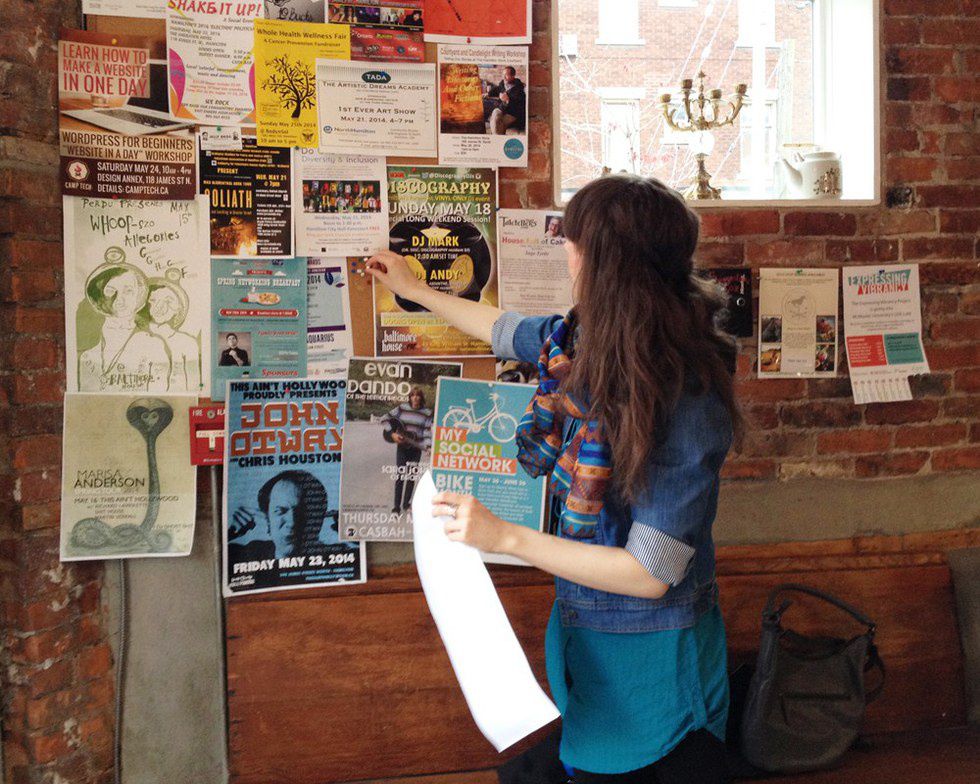When discussing fashion, there are many different ideas that are incorporated into, and ultimately make up, the trends that are seen from nation to nation. The trickle-up theory suggests that styles are adopted from “the streets” or lower-income groups, and then those same styles flow to upper-income groups and designers where it then becomes a trend that can become known worldwide. There have been many different examples of this theory throughout the history of fashion. The trickle-up theory is apparent in society when studying the trends, styles, and fashion staples from each decade. Specifically, the 1970s, 1980s, and 1990s displayed distinct trends that were outcomes of social issues occurring during those times. These trends relate directly to the trickle-up theory and have managed to make a permanent mark on the fashion industry.
During the time of the Vietnam War, there were many people who disagreed with the actions that the government was taking, as well as other issues in society. These people were known as “hippies” and they rejected conventional values and were interested in nature, freedom, and living an alternative lifestyle. This was a reversion of the Beat Generation in the 1950s, which was a “group of authors whose literature explored and influenced American culture in the post-World War 2 era". Hippies wore clothes made from natural fibers and often made clothing by dying multi-ethnic prints. Popular clothing items amongst hippies includes headbands, hip-huggers, cotton peasant blouses, and bell-bottom jeans. Some hippies identified themselves as a “flower child” since they often wore flowers in their hair or on their clothes, symbolizing peace and love.
In the 1980s, many young men and women were entering the workforce with high levels of energy and an intense drive to change the business world for the better. These individuals, commonly referred to as a “yuppie”, lived a hectic lifestyle and rewarded themselves by spending their hard-owned money on goods that further enriched their image. The term “yuppie” stands for “Young Urban Professional Person”, referring to people that were young and college educated. Yuppies had jobs that paid a lot of money and lived or worked near a large city. The typical “uniform” of a yuppie included items such as the Sony Walkman, a briefcase, a pinstripe suit, and a designer watch. Yuppies stood out so much in society because they proved that young people have the same determination to achieve anything they wish, even in such a fast-paced world.
The 1990s was a time in which people were not afraid to express themselves freely. People were especially vocal in music, and this had a big effect on the fashion trends that eventually became popular, creating the idea of “grunge”. Bands such as Nirvana and Soundgarden influenced aspects of darkness and edge into the clothing that people wore. The wearer of grunge was not concerned with being fashionable or spending excess amounts of money on how he/she looked. People that adopted the style of grunge choose garments that were inexpensive, already worn, and mostly poorly fitted, as if it was bought at a thrift or consignment store such as Goodwill. Recognizable elements of grunge fashion include oversized plaid flannel shirts, ripped jeans, combat boots, choker necklaces, and dark colored sheer tights.
As the decades came to an end and the time on the clock ticked away, the styles of hippies, yuppies, and grunge fanatics drifted in and out of the clothes shown on runways and the streets. Although these trends were not in full-force after the decade in which they became popular in, they all managed to remain prominent in certain areas of the fashion world. Free People, for example, is an extremely popular fashion line that offers clothes that reflect the styles of the 1970s hippie era, just with a more modern flare. Trends of the grunge era like choker necklaces, ripped jeans, and dark band t-shirts have made their way back into the spotlight within the recent years, especially amongst teenagers and young adults. The idea of the yuppie has been somewhat controversial over the years about whether that type of person still exists or not. Cornell University economist Robert H. Frank claims that the idea of the yuppie never went away. He proves his point when he goes on to explain how for a while, people thought that it might be better not to be “too ostentatious about your consumption”. Frank gives the example of “instead of parking the expensive Porsche out front, you bought a house with a garage in the back." Even though people are less likely to show-off, they have not lost their taste for expensive and quality goods.
These eras of fashion and the trends that followed undoubtedly tie into the idea of evolution. As particular styles began to draw attention on the streets, top designers decided to incorporate them into their collections. This ended up making an everlasting mark on the fashion industry for decades to follow. Different components of each trend eventually became innovated so that it would have a more modern look to it. By doing this, styles remained relevant to the consumer’s eye and could be combined with other styles and trends of the moment. Some aspects of these trends ended up becoming obsolete because they did not fit into the constantly changing clothing of the current times.



















